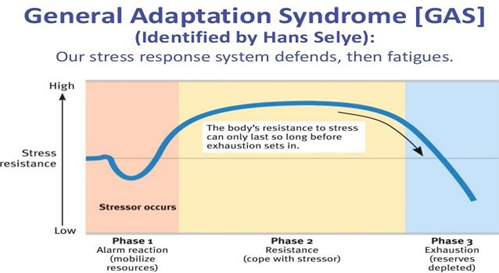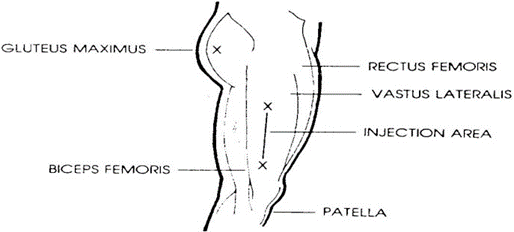N100 Med-Surg Final Exam
ATI N100 Med-Surg Final Exam
Total Questions : 91
Showing 10 questions Sign up for moreExplanation
B. This is the initial phase of the nurse-client relationship where the individuals first meet. It is characterized by establishing rapport, clarifying roles, setting goals, and developing an agreement or contract for the relationship.
A. This phase occurs towards the end of the nurse-client relationship when goals have been achieved or the relationship is ending for other reasons. It involves summarizing, evaluating progress, and saying goodbye.
C. This phase follows the orientation phase. It is characterized by actively working together to achieve mutually agreed upon goals. During this phase, the nurse and client explore issues, develop and implement solutions, and evaluate progress towards goals.
D. This phase occurs before the nurse and client meet formally. It involves gathering information about the client from various sources, such as medical records or other healthcare professionals.
Explanation
C. Rapid heart rate (tachycardia) can be a sign of fluid overload, as the heart compensates for increased volume by beating faster to maintain cardiac output.
D. Shortness of breath (dyspnea) can indicate fluid overload, especially if it is new or worsening and associated with pulmonary congestion due to fluid accumulation.
E Elevated blood pressure can be a sign of fluid overload, as increased circulating volume can lead to hypertension.
A. This statement suggests a decrease in peripheral edema, which is a positive sign and does not typically indicate fluid overload. It may actually indicate improvement.
B. Dizziness can be a symptom of hypovolemia (low fluid volume) rather than fluid overload. It is not typically a specific sign of fluid overload.
The nurse recognizes that the client's energy has been depleted despite attempts to intervene and the client dies. This is a description of which phase of the General Adaptation Syndrome?
Explanation
C. If the stressor persists for a prolonged period and the body is unable to adapt or cope effectively, it enters the exhaustion phase. During this phase, the body's resources become depleted. The client experiences decreased energy, reduced ability to cope with stress, and may develop stress-related illnesses or complications.

A. It is characterized by the body's immediate response to a stressor, where physiological changes occur such as increased heart rate, heightened senses, and activation of the fight-or-flight response.
B. After the initial alarm reaction, if the stressor persists, the body enters the resistance phase. In this phase, physiological changes stabilize as the body attempts to cope with the stressor.
D. This phase occurs if the stressor is removed or successfully managed, allowing the body to recover and return to a state of homeostasis. During recovery, the body repairs any damage caused by the stress response and replenishes its energy and resources.
It is important for the nurse to ensure that the client's post-operative Jackson-Pratt device is patent because its purpose is to:
Explanation
A. The JP drain helps prevent excessive accumulation of fluid in the wound by actively draining it away. If fluid were to accumulate excessively, it could impair wound healing and increase the risk of infection.
However, the primary purpose of the JP drain is to remove fluid rather than prevent its collection altogether.
B. The JP drain does not directly assess the degree of healing. Its primary function is to drain fluid from the wound to promote healing by preventing fluid accumulation, which could hinder healing. Assessing the degree of healing typically involves visual inspection of the wound by the healthcare provider rather than relying on the drain.
C. This is not the purpose of the JP drain. Healing generally occurs by the gradual migration of cells and tissues to close the wound, which is an internal process. The JP drain assists in the healing process by preventing complications due to fluid accumulation but does not influence healing from outside to inside.
D. While the JP drain itself does not directly prevent the entrance of microorganisms into the wound, it indirectly contributes to infection prevention by removing excess fluid. Accumulated fluid can provide a medium for bacterial growth, potentially leading to infection. By draining fluid effectively, the JP drain helps maintain a cleaner wound environment, reducing the risk of infection.
Explanation
D. This statement exemplifies the ethical principle of fidelity, also known as faithfulness or commitment. Fidelity involves keeping promises, being reliable, and fulfilling commitments made to patients. By returning promptly with the pain medication as promised, the nurse demonstrates fidelity by honoring their commitment to the patient's care and comfort.
A. This statement reflects the ethical principle of justice, which emphasizes fairness and equality in treatment for all patients. Justice ensures that resources and treatments are distributed fairly among individuals.
B This statement demonstrates the ethical principle of nonmaleficence, which focuses on preventing harm and minimizing risks to patients. It emphasizes the nurse's commitment to avoiding harm or injury to the patient.
C. This statement relates to truth-telling or veracity, which involves providing honest and accurate information to patients about their care, procedures, and potential outcomes. It reflects transparency and respect for patient autonomy.
The nursing instructor asks the student nurse to identify the intramuscular injection sites. The student correctly identifies the following sites: (SELECT ALL THAT APPLY)
Explanation
A. This is located on the lateral side of the thigh. It is a commonly used site for infants, toddlers, and young children, as well as adults who require large-volume injections.

B. This site is located on the hip or gluteal region. It is considered one of the safest and least painful sites for intramuscular injections in adults. It is also used when the volume of medication is larger or when the dorsogluteal site is contraindicated.
E. This site is located on the upper arm, specifically the lateral aspect. It is commonly used for vaccines and medications that require smaller volumes in adults and older children.
C. There is no specific muscle called the "rectus lateralis." It seems to be a combination of the rectus femoris (a muscle in the quadriceps group of the thigh) and the vastus lateralis. However, neither "rectus lateralis" nor "rectus femoris" is commonly used as a distinct injection site in clinical practice.
D. This site is located on the buttocks. Historically, it was a commonly used site for intramuscular injections, but it has fallen out of favor due to the potential risk of injury to the sciatic nerve and superior gluteal artery.
A client is brought into the emergency department for an overdose of morphine. The client has a respiratory rate of 5 to 8 breaths per minute. Which of the following ABG results would the nurse expect to see?
Explanation
B. pH 7.25, PaCO2 61, HCO3 26
pH is decreased (acidosis).
PaCO2 is elevated (61 mmHg), indicating respiratory acidosis (increased CO2 retention). HCO3 is slightly elevated (26 mEq/L), compensating for the respiratory acidosis.
A. pH 7.45, PaCO2 35, HCO3 22
pH is within normal range (7.35-7.45).
PaCO2 is slightly lower than normal (35 mmHg), indicating mild respiratory alkalosis. HCO3 (bicarbonate) is within normal range (22 mEq/L).
C. pH 7.23, PaCO2 27, HCO3 25
pH is decreased (acidosis).
PaCO2 is lower than normal (27 mmHg), indicating respiratory alkalosis (which is unlikely in the context of morphine overdose with hypoventilation).
HCO3 is within normal range (25 mEq/L).
D. pH 7.54, PaCO2 59, HCO3 26
pH is increased (alkalosis).
PaCO2 is elevated (59 mmHg), indicating respiratory acidosis (consistent with hypoventilation). HCO3 is slightly elevated (26 mEq/L), compensating for the respiratory acidosis.
Explanation
C. Range-of-motion (ROM) exercises are essential in preventing contractures. These exercises aim to maintain or improve joint mobility by moving each joint through its full range of movement. They help stretch tight muscles and maintain flexibility, thereby preventing the progression of contractures.
A. While muscle strengthening exercises are beneficial for overall muscle health, in the context of contractures, the primary issue is the shortened and tight muscles. Strengthening exercises alone may not effectively address the contractures and could potentially exacerbate them.
B. Frequent repositioning is crucial to prevent and potentially reverse contractures. By changing the client's position regularly, pressure and stress on specific muscle groups are relieved, which can help prevent further tightening and promote flexibility. This intervention helps maintain joint mobility and prevents contractures from worsening.
D. Weight-bearing activities can be beneficial for joint health and bone density but may not directly address contractures. Contractures involve structural changes in the muscle-tendon unit rather than joint stiffness alone.
Explanation
D. When clients perceive that the knowledge or information being presented is beneficial to their health outcomes, they are more likely to be motivated to learn. Understanding how the knowledge can improve their health, manage their condition, or prevent complications provides intrinsic motivation to engage in learning activities.
A. While health literacy is important for understanding health information, having a high level of health literacy alone does not guarantee motivation to learn. Motivation to learn is more about personal engagement and perceived relevance of the information to one's own health and well-being.
B. While this may provide motivation for compliance with treatment plans or learning specific self-care tasks required for discharge, it does not necessarily translate to a strong motivation to learn beyond immediate needs related to discharge.
C. Formal education may contribute to overall cognitive abilities and learning skills, but it does not automatically translate into motivation to learn in a healthcare context. Motivation to learn is more about personal interest, perceived relevance, and understanding the benefits of acquiring new knowledge.
Explanation
A. By critically thinking about client care, nurses can assess situations, analyze data, evaluate options, and make informed decisions that contribute to the delivery of high-quality care. Critical thinking helps nurses identify priorities, anticipate potential complications, and adapt care plans based on individual client needs and responses.
B. While critical thinking is important in research and evidence-based practice, its primary role in client care is to ensure that nursing interventions are well-reasoned, evidence-based, and tailored to meet the specific needs of clients. While clients may benefit indirectly from evidence-based care resulting from nursing research, client care primarily focuses on immediate clinical decision-making and management.
C. Critical thinking involves analyzing various aspects of client care, including physiological, psychological, and social phenomena. By critically analyzing these phenomena, nurses can understand underlying issues, identify contributing factors to health conditions, and determine appropriate nursing interventions to promote health and well-being. This process helps nurses make sense of complex client situations and provide holistic care.
D. Critical thinking enables nurses to consider multiple options or strategies for nursing actions. By critically evaluating these options based on client assessment data, evidence-based practice guidelines, and ethical principles, nurses can make informed decisions about the most effective and appropriate interventions for their clients. This ensures that nursing care is individualized and responsive to the unique needs and preferences of each client.
You just viewed 10 questions out of the 91 questions on the ATI N100 Med-Surg Final Exam Exam. Subscribe to our Premium Package to obtain access on all the questions and have unlimited access on all Exams. Subscribe Now



